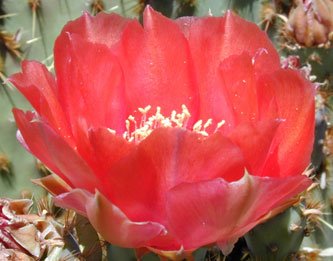On our way to Dinosaur Provincial Park, we traveled some secondary roads, one of which took us through the little town of Harlowtown which had this electric locomotive displayed. For the rail buffs, this is an E575B which is the last GE electric locomotive of 116 once owned by the now-defunct Milwaukee Road. These locos were used on a 600-mile mountainous stretch of the St. Paul and Pacific Railroad. There was a major roundhouse at Harlowtown which was closed in 1974. The story of so many railroad towns.

The area of badlands in which the dinosaurs are found is also an area where coal was mined until the railroads switched to diesel in the 1950’s. Several historical sites in the area have to do with coal mining. This suspension bridge over the Red Deer River led to a coal mine on the other side of the river from town.

The Atlas Coal Mine boasts the only standing wooden coal tipple remaining in the province. If you look closely you might see the large-diameter guy wires that keep it standing. One can take a tour underground in the mine but we passed on this one.

Nearby was an excellent example of the famous Alberta grain elevator, a wooden structure that once was a ubiquitous site in the province. The Canadian railways laid down an incredible number of miles of spur lines to service these grain elevators that were spread all across the province. Many of the elevators succumbed to fire and were replaced with the larger and homelier but probably more functional metal structures seen today. There is actually a museum of the Alberta grain elevator, but it was not near our route. These really are lovely structures and it was always a treat to see one looming up on the horizon across the prairie.

Alberta doesn’t get a lot of rain in a normal year, of which this was not one, as evidenced by the flooded fields. In the early days, drought and the general lack of rainfall was a problem for the farmers. Several irrigation districts were formed and dams built to create reservoirs. About 90 years ago, someone’s bright idea was a several kilometers-long aqueduct to bring water to the farmer in the Brooks area. It turned out not to work very well and was abandoned after a very short time, to be replaced by a canal. Today the province touts it as being the largest concrete structure of its type in the world, but I’ve seen the Pont du Gard and trust me, there is no comparison.
 There is a small Provincial Historical Site along one section of the aqueduct and there were wonderful drifts of a kind of wild blue peas blooming and perfuming the air along the banks of the adjacent canal.
There is a small Provincial Historical Site along one section of the aqueduct and there were wonderful drifts of a kind of wild blue peas blooming and perfuming the air along the banks of the adjacent canal. 
The town of Lethbridge was worth a detour to see this railroad bridge, one hundred years old last year and still in use. It is said to be the longest and highest of its kind. Unfortunately we did not see a train going across it. It was way too long to fit into my camera's field of view but this gives you an idea of what it looks like.

As we left the province, we made one last detour to Writing-on-Stone Provincial Park, just north of the border. This park is in an area of stone outcroppings above the Milk River, which flows into Montana. It supposedly contains the largest collection of Plains Indian stone art in North America and has a quite new, quite state of the art visitor center with fascinating interpretive displays. Alas, the bus tour which gives access to the best examples of rock art was booked for the next couple of days and the hiking trail which provides access to some other examples was way longer than either of us could handle, especially with the hot weather. Fortunately we both enjoyed the visitor center displays and felt like it was a worthwhile side trip.



0 Comments:
Post a Comment
<< Home